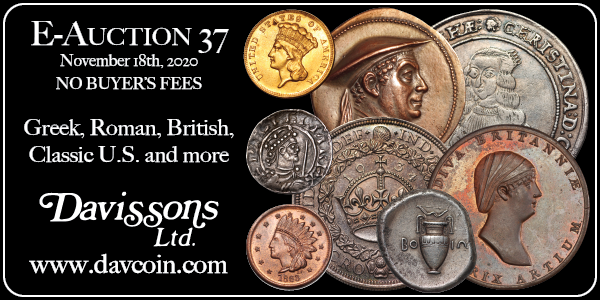
PREV ARTICLE
NEXT ARTICLE
FULL ISSUE
PREV FULL ISSUE
VOCABULARY TERM: HEAT TREATINGDick Johnson submitted this entry from his Encyclopedia of Coin and Medal Terminology. Thanks. -Editor Heat Treating. The controlled heating and cooling of metal to change its physical properties; it includes annealing, quenching and tempering, among others. Each metal has the characteristic that its properties are changed with the raising and lowering of temperature, often rapidly. Iron or steel is important in coin and medal manufacture – primarily for dies – and steel can be heat treated to extremes of hardness, for example, soft for cutting in the design, hard for striking. Art medals with high relief design can only exist because of heat treating: the metal composition – traditionally bronze or silver – can be softened by annealing after each strike, allowing for another blow to build up the high relief. Here are some of the specific areas in which heat treating is used in coin and medal making: Annealing is the heat treating process to soften metal; it also improves the grain structure and by so doing it relieves any stress in the metal. Each step of metalworking – particularly striking – work hardens or creates stress in the metal. (Subsequent striking is futile, moving any more surface metal as in striking becomes nearly impossible.) Annealing relieves this stress and makes the surface softer after which the medals are receptive and can be given an additional blow or other metalworking activity. The metal to be annealed is heated in a furnace. Time and temperature are important! For medals the stress hardening is not that deep in the metal so the annealing must be for the surface only (requiring less time at high temperature). The metal is then cooled, ultimately to room temperature. Annealing can be done in a batch furnace, a continuous belt furnace, or a salt pot furnace. The cooling can be done by water or air. Steel dies occasionally need to be softened once they had been hardened, to correct an error in the die, or for any retouching or recutting. A common act is to change the date in a die used every year. Another term of annealing is normalizing. This is a process to return the metal to a desired state by allowing it to return to room temperature slowly. Quenching is the rapid cooling for hardening once the object – like a steel die – is heated to above a critical temperature. The heat and rapid cooling causes the steel to harden. The rapid cooling is accomplished by immersion in a liquid bath of oil, water, brine, liquid salt, or very infrequently, by air. Oil gives a slower cooling rate than water, brine is faster than water. Air cooling is done with a fan. Generally high carbon steels are quenched in oil, low carbon steels in water. The die is immersed into the liquid bath, raised and lowered about 20 times, but it must remain completely submerged in the liquid, allowing the temperature to lower at a uniform rate. Should it be exposed to air, particularly early in this treatment, it may flare up; too early of an exposure would cause an uneven hardening and possibly quenching crack. Tempering is a reheating and recooling to treat the deeper internal metal stresses. Lower temperatures are used but the time and temperature becomes more critical, thus controlling these is vital. The quenching is done with oil, water, brine or air. Other terms of tempering is draw, drawing, slowly bringing metal to a desired temper, and normalizing, a softening and improvement of the metal grain structure. Heat treating ovens. Modern ovens used for heat treating have very sophisticated temperature controls. Of course, this was not always the case, and early mints and medal makers had the problem, of controlling ovens in which they needed to harden dies, and soften metals for striking. Those early ovens required operators who could "read" the temperature of the oven by the color the steel became. For example here are the colors, temperatures and some typical applications for each:
In all heat treating processes the hardness is tested often with hardness testers either Rockwell or Brinnel. The instruments test the surface hardness by an indenter of a steel ball bearing or diamond point pressing against the surface. See HARDENING.
Looking for the meaning of a numismatic word, or the description of a term? Try the Newman Numismatic Portal's Numismatic Dictionary at: https://nnp.wustl.edu/library/dictionary Or if you would like a printed copy of the complete Encyclopedia, it is available. There are 1,854 terms, on 678 pages, in The Encyclopedia of Coin and Medal Technology. Even running two a week would require more than 19 years to publish them all. If you would like an advance draft of this vital reference work it may be obtained from the author for your check of $50 sent postpaid. Dick Johnson, 139 Thompson Drive, Torrington, CT 06790.

Wayne Homren, Editor The Numismatic Bibliomania Society is a non-profit organization promoting numismatic literature. See our web site at coinbooks.org. To submit items for publication in The E-Sylum, write to the Editor at this address: whomren@gmail.com To subscribe go to: https://my.binhost.com/lists/listinfo/esylum All Rights Reserved. NBS Home Page Contact the NBS webmaster 
|